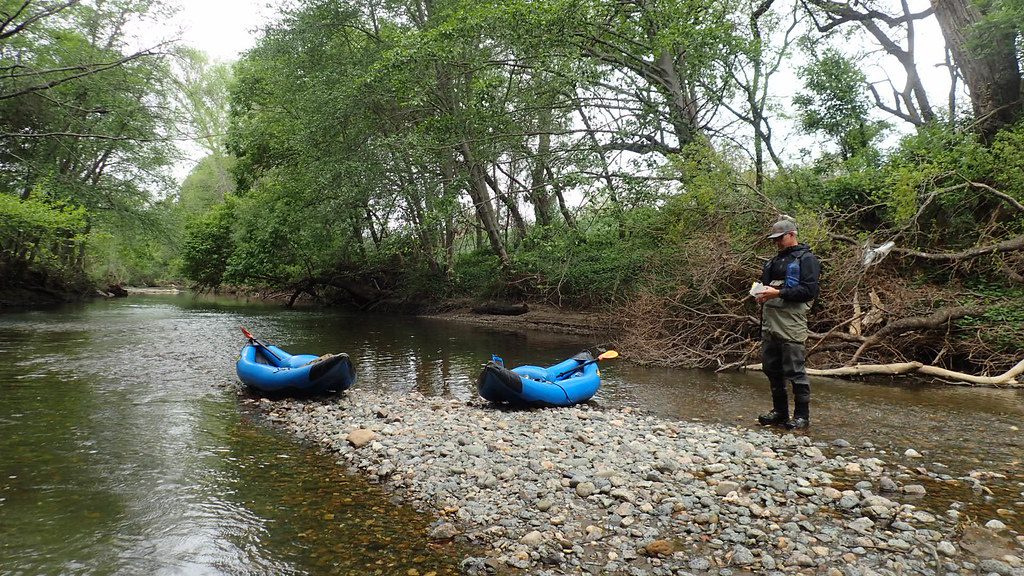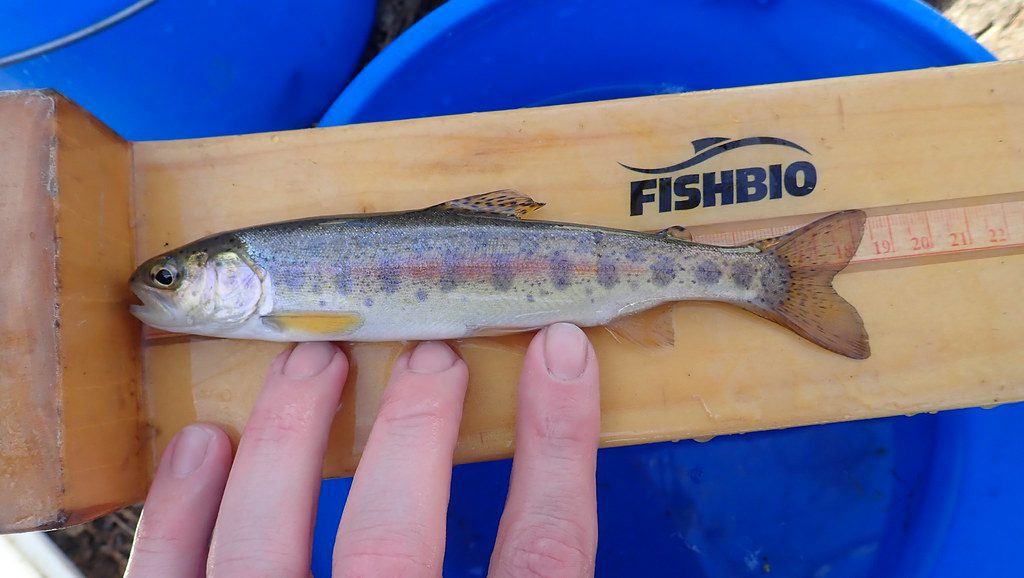Monday February 8, 2021

The Calaveras River is home to several iconic and sensitive native California fish species, including both forms of Oncorhynchus mykiss (steelhead and rainbow trout) and opportunistic runs of Chinook salmon (Oncorhynchus tshawytscha). As part of a Habitat Conservation Plan (HCP) recently developed to help benefit these species, the Stockton East Water District is required to establish a fisheries monitoring program to determine whether the conservation strategies established by the HCP are working to improve fish populations. Since 2001, Stockton East has been supporting routine monitoring on the Calaveras River that has yielded important data on the life history of special-status fish species, and has been used to better inform the science and decisions made in the HCP. The HCP ensures that these monitoring activities to survey juvenile and adult salmonids, as well as their habitat and food sources, will continue under the terms of a 50-year water operations permit.
A key element of the fisheries monitoring program is a rotary screw trap that has been operating seasonally at the Shelton Road bridge crossing to monitor juvenile salmonids as they move downstream from spawning and rearing grounds below New Hogan Dam. Juvenile steelhead and salmon counts at this location are important for assessing attributes of the population (such as abundance, timing of emergence, and downstream migration), attributes of individual fish (such as general health and life-history expression), and associated attributes of the habitat (such as water temperature and flow). During sampling activities, scales are collected from each O. mykiss handled. When analyzed, these scales can provide data regarding the variability and diversity of growth and age-at-outmigration. Fish sampled at the rotary screw trap are often also tagged with Passive Integrated Transponder (PIT) tags to track their movement, growth, and survival over time. Rotary screw traps are useful for monitoring migratory Chinook salmon and the steelhead form of O. mykiss, but many O. mykiss in the Calaveras are year-round residents or have yet to make a migration. Therefore, researchers also conduct snorkel surveys to directly observe these fish in their natural habit. Over-summer snorkel surveys have taken place on the Calaveras River since 2011 and have served to improve annual estimates of O. mykiss abundance while also yielding important information on fish habitat use.

Monitoring adult salmonids on the Calaveras River consists of two components: video monitoring at the Bellota Weir temporary fish ladder and spawning (redd) surveys in key reaches of the Calaveras. Adult fish migrating upstream are counted using a version of FISHBIO’s Smolt Spy video monitoring system as they pass through the Bellota Weir fish ladder into spawning grounds. Spawning surveys are used to compare the number of redds (nests) with the number of fish observed during video monitoring, as well as document the temporal and geographic distribution of redd construction. Results of these surveys can also be used to guide potential restoration actions and inform resource managers of the river flows and water temperatures needed to maximize spawning habitat area.
The final component of the fisheries monitoring program consists of benthic macroinvertebrate (BMI) sampling. Macroinvertebrates are a fundamental source of salmonid food and can be affected by changing water levels and water diversions similar to other aquatic species. BMI sampling allows researchers to document changes that may occur in species composition and the environmental conditions that may have contributed to the changes. These surveys also provide an opportunity to identify locations that may be impacted by the highly invasive New Zealand mudsnail (Potamopyrgus antipodarum) and to determine mudsnail distribution throughout the Calaveras River. In order to develop the best management practices to conserve sensitive fish species, we need good information about fish population sizes, behavior, and habitat use. The components of this monitoring program are designed to encompass all life-stages of salmon and trout in the Calaveras River and help ensure the best available data are being used to inform management actions. Watch our recent video to learn more about the fisheries monitoring program that is part of the Calaveras HCP.
This post featured in our weekly e-newsletter, the Fish Report. You can subscribe to the Fish Report here.
